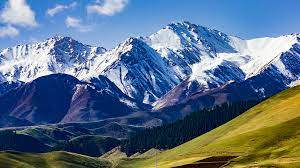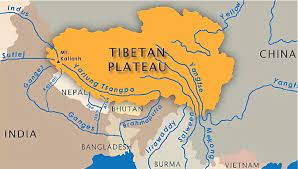The Tibetan Plateau is known as the “Roof of the World”. It is a vast high-altitude region located in central Asia, covering an area of about 2.5 million square kilometers. It is the largest and highest plateau on Earth, with an average elevation of over 4,500 meters above sea level. The region is home to a diverse range of flora and fauna, as well as a rich cultural heritage.

The plateau is bordered by the Himalayan mountain range to the south, the Kunlun Mountains to the north, and the Karakoram range to the west. It is also the source of several major rivers, including the Yangtze, Mekong, and Yellow Rivers, which flow into China and Southeast Asia.
Geologically, the Tibetan Plateau is a relatively young landmass, formed by the collision of the Indian and Eurasian tectonic plates. This collision created the Himalayan mountain range and caused the plateau to rise to its current elevation. The plateau is still rising at a rate of about 5 millimeters per year, making it one of the most rapidly changing landscapes on Earth.

The Tibetan Plateau is a unique ecosystem, with a combination of high-altitude, dry climate, and extreme temperatures that make it one of the harshest environments on Earth. Despite this, the region is home to a wide variety of plant and animal species, many of which are found nowhere else on the planet. The Tibetan antelope, Tibetan snow leopard, and Tibetan wild yak are just a few of the iconic species that call the plateau home.
The people of the have a rich cultural heritage, with a unique language, religion, and way of life. The Tibetan language belongs to the Tibeto-Burman language family and is spoken by over 6 million people in China, India, Nepal, and Bhutan. Buddhism is the dominant religion in the region, and many of the world’s most famous monasteries, including Potala Palace and Jokhang Temple, are located on the plateau.
The Tibetan Plateau is also an important source of natural resources, including minerals, timber, and medicinal plants. The region is home to the world’s largest reserve of chromium and has significant deposits of copper, gold, and other minerals. Tibetan medicine, which incorporates traditional knowledge of the plateau’s plant and animal life, has been practiced for thousands of years and is still widely used today.
Despite its rich cultural and ecological importance, the Tibetan Plateau is facing a range of environmental challenges. Climate change, overgrazing, and mining are all threatening the delicate balance of the plateau’s ecosystem. The Chinese government’s policies, including large-scale infrastructure development, have also raised concerns about the future of the region’s unique cultural and environmental heritage.
In conclusion, the Tibetan Plateau is a unique and important region of the world, with a rich cultural heritage and a delicate ecosystem. As global awareness of the importance of protecting the planet’s natural resources and cultural diversity grows, it is essential that we work together to ensure that the Tibetan Plateau is preserved for future generations.
Important Links